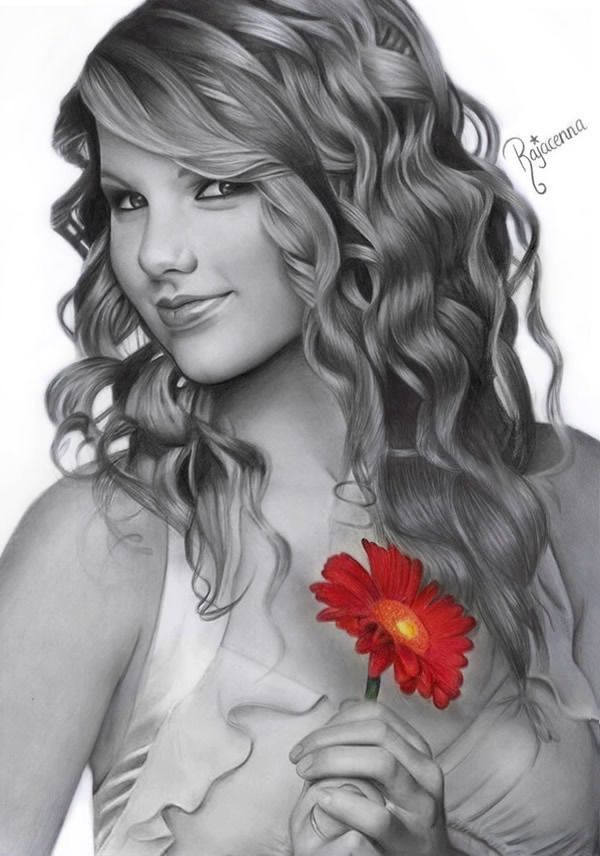In the realm of art, pencil sketch images hold a special place for their simplicity, expressiveness, and timeless appeal. Whether you are a seasoned artist or just starting your creative journey, mastering the art of pencil sketching can open up a world of artistic possibilities. This comprehensive guide will provide you with valuable insights, tips, and techniques to elevate your pencil sketching skills and create stunning works of art.
To embark on this exciting artistic adventure, you will need a few essential materials: a set of high-quality graphite pencils with varying degrees of hardness, an eraser, a sharpener, and a sketchbook or drawing pad. With these basic tools, you can begin your journey into the world of pencil sketching. This detailed guide will accompany you every step of the way, offering expert guidance to help you capture the essence of your subjects and bring your artistic vision to life.
Let’s delve deeper into the intricacies of pencil sketching, exploring the fundamentals of shading, composition, and perspective that will transform your sketches from simple lines into captivating works of art. By understanding the principles of light and shadow, you will be able to create depth and dimension in your drawings, making them come alive on the page. Furthermore, learning about composition and perspective will help you arrange elements harmoniously and convey a sense of space in your sketches, resulting in visually stunning pieces.
Drawing Pencil Sketch Images
Mastering the art of pencil sketching requires patience, practice, and attention to detail. Here are three key points to keep in mind as you embark on your sketching journey:
- Observe and Understand:
- Control and Pressure:
- Practice, Practice, Practice:
Remember, the more you practice, the more refined your skills will become. Experiment with different subjects, techniques, and approaches to discover your unique artistic style. Embrace the beauty of mistakes and learn from them, for they are often the stepping stones to artistic growth and self-expression.
Observe and Understand:
The foundation of successful pencil sketching lies in keen observation and a deep understanding of your subject. This involves not only looking at the physical characteristics of an object or scene but also comprehending its essence, its unique qualities, and its relationship to its surroundings.
Begin by studying the overall shape and form of your subject. Break it down into simpler geometric shapes to help you capture its proportions accurately. Pay attention to the lines and angles that define its contours.
Next, examine the details and textures that make your subject unique. Notice the subtle variations in tone and shading that create depth and dimension. Observe how light interacts with the surface of your subject, casting highlights and shadows that reveal its form.
Take the time to understand the context of your subject. Consider its relationship to other objects in the scene and the environment in which it exists. This will help you convey a sense of place and atmosphere in your sketch.
Remember, observation and understanding are ongoing processes. As you continue to practice sketching, your ability to perceive and capture the nuances of your subjects will improve, leading to more refined and expressive artwork.
Control and Pressure:
Mastering the control and pressure of your pencil is essential for creating a wide range of tones and textures in your pencil sketches. The amount of pressure you apply while drawing directly affects the darkness and thickness of your lines.
To achieve precise and controlled lines, hold your pencil lightly and maintain a consistent pressure. This will help you create clean, sharp lines that define the contours and details of your subject.
For darker, more expressive lines, increase the pressure on your pencil. This is particularly useful for creating shadows, emphasizing certain elements of your drawing, or adding depth and dimension.
Varying the pressure you apply can also help you create different textures in your sketches. For example, lightly pressing your pencil can create a soft, feathery texture, while firmly pressing it can create a rough, grainy texture.
Experiment with different pressure levels and techniques to discover the wide range of marks and textures you can achieve with your pencil. This control and variation will add depth and interest to your pencil sketches.
Practice, Practice, Practice:
As with any skill, practice is the key to improving your pencil sketching abilities. The more you practice, the more comfortable you will become with your tools and techniques, and the more refined your skills will become.
Set aside regular time for sketching, even if it’s just for a few minutes each day. Make a habit of sketching objects, scenes, and people around you. This will help you develop your observational skills and train your hand-eye coordination.
Don’t be afraid to experiment and try new things. Try different pencils, papers, and techniques to see what works best for you. Challenge yourself to draw different subjects and explore different styles.
Seek feedback from other artists or join a sketching group to get constructive criticism and learn from others. Attend workshops or online courses to enhance your skills and learn new techniques.
Remember, practice is not just about quantity but also about quality. Focus on improving your observation skills, controlling your pencil, and conveying the essence of your subject. With dedication and perseverance, you will see significant progress in your pencil sketching abilities.

